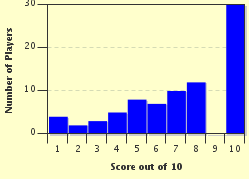
Tales of 17th Century Conflicts Quiz
The history of the world is full of stories about conflicts - and the 17th century was no exception. Can you match the date, which may mark the beginning OR the end of the conflict, and those involved with the correct conflict?
A matching quiz
by ponycargirl.
Estimated time: 4 mins.
- Home
- »
- Quizzes
- »
- History Trivia
- »
- European
